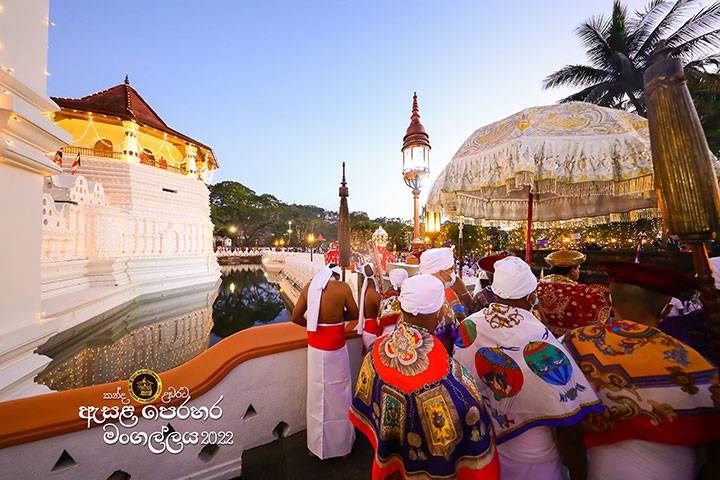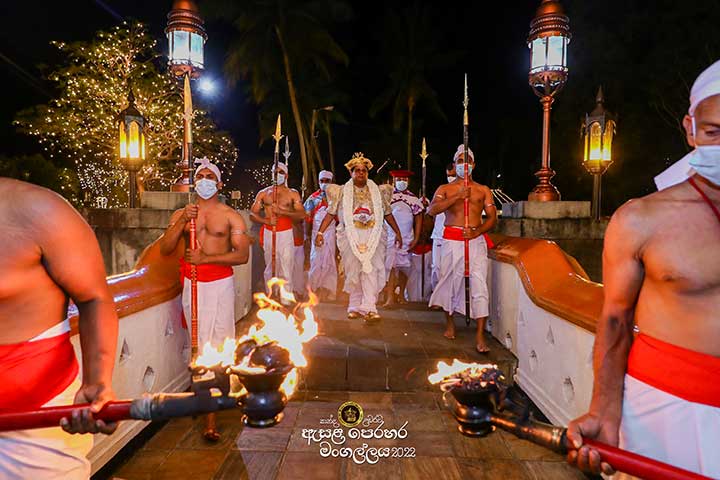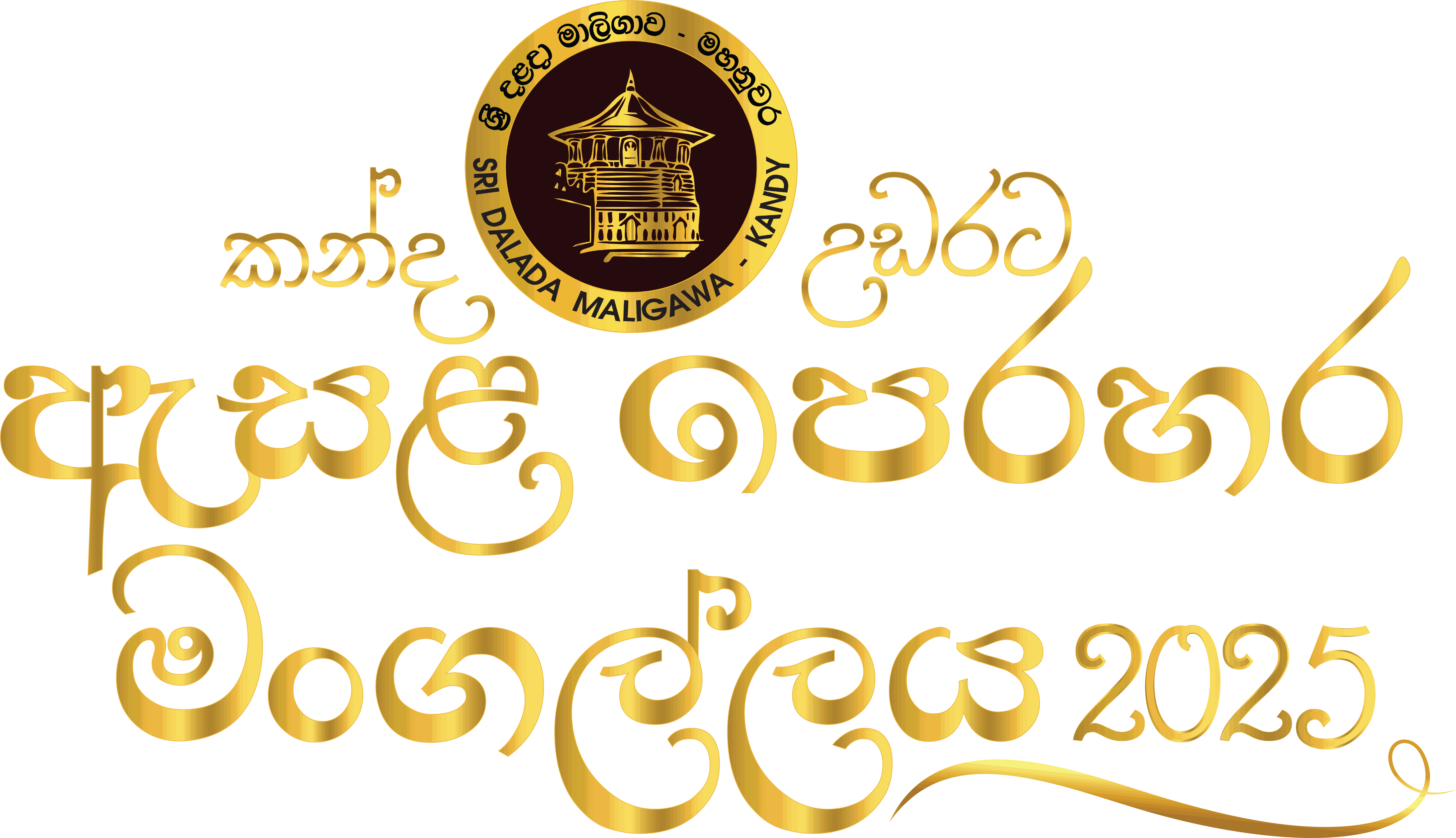THE HISTORY OF KANDY ESALA PERAHERA
The Most Historical Cultural procession of the World
Buddhist Literature unveils various pageants and festivities held in great honor of Lord Buddha. The perahara pageant concept became popular during the reign of Emperor Asoka of India. Kandy Perahara pageant really pageant which displays traditional customs. Majority of them been intermingled with the Buddhist and Hindu religious customs. Yet they display and highlight the great value of the Sinhala culture. Most of the customs have taken from on statues stated in the “Dantha Dhathu Charitha” or “Dalada Siritha” (a book on the customs pertaining on the sacred Tooth Relic) Written during the regime of Parakramabahu IV (1302-1326) of Kurunagala. The Dalada Siritha stated 38 statutes, on which a Perahara pageant should be conducted. Accordingly, the Shrine Room of the Sacred Tooth Relic should be cleaned at the auspicious hour. canopies should be tied, should be decorated beautifully with various silk clothes; The king team of ministers and general public of the city should make offering of rice, flowers and light oil lamps on the 7th day morning, the city should be decorated like the heaven on the same day evening, the chief priests of Uttara Mula Sect personnel of two castes Ganavesi and Kilin should move the Sacred Relic casked with utmost veneration. These rites were performed annually. Even today rights were performed accordingly.
Time Line
-
200 B.C.
Old Ritual of Esala Perahera
A ritual called the Esala Perahera is performed to askthe gods for rain.
-
300 A.D.
Tooth Relic is Brought to Sri Lanka
The Sacred Tooth Relic of Buddha is transported from India to Sri Lanka 800 years after his death.
-
400 A.D.
‘Fa Hien’
The book of Chinese pilgrim ‘Fa Hien,’ who traveled to Sri Lanka in the fifth century A.D., contains the most illuminating account of the Esala Perehera.
-
1815
Custody of the Tooth Relic
When the Kandyan kingdom is conquered by the British, the Buddhist clergy is given custody of the Tooth Relic.
KUMBAL PERAHERA
(KUMBAL PROCESSION)
The first procession of the Sacred Tooth Relic starts with the Kumbal Perahera. This is the first Kumbal Perahera shown to the infants to drive away Evil Spells and Ill will. It is a tradition that the procession parades the streets of Kandy for five days. But the Kumbal Perahera is popular and remains as an unfinished procession or a semi procession. The reason is that Nilames do not walk in this procession. But the Drummers and Tuskers take part without any ceremonial costumes.


RANDOLI PERAHERA
(RANDOLI PROCESSION)
This could be seen only with the procession of the Sacred Tooth Relic and parade the streets for whole five days which is a tradition. In the days of the Kings, the Chief Queens of the Kings paraded in this procession in Palanquins. As the participation of the Queens was not proper to the procession of the Sacred Tooth Relic they were stopped but a palanquin is taken in the procession as an honor to the Queen. Today it is taken as the last item of the procession. The four Devalas carry their own decorated palanquins with religious articles of the Devales. Although palanquins are carried the honor they receive is no less.
MAHA RANDOLI PERAHERA (THE GRAND RANDOLI PROCESSION)
The Maha Randoli Perahaera is the last Procession. It is the grandest event of the festival. The Tuskers come with garlands and decorated with gold stitched costumes. The drummers come fully dressed with ceremonial costumes. The Diyawadana Nilame adds a novel glamour to the procession by wearing a newly stitched costume.
THE MODERN PERAHERA
The Modern Perahera dates back to the reign of the Kandyan King Kirthi Sri Rajasinghe (1747 – 1781 AD). During these times, the Tooth Relic was considered the private property of the King and the public never got a chance to worship it. However, King Rajasinghe decreed that the Relic is taken in procession for the masses to see and venerate. After the Kandyan Kingdom fell to the British in 1815, the custody of the Relic was handed over to the Buddhist Clergy. In the absence of the king, a lay custodian called the “Diyawadana Nilame” was appointed to handle routine administrative matters.
PROCESSION VALUE
The Kandy Esala Perahera begins with the Kap Situveema or Kappa, in which a sanctified young Jackfruit tree (Artocarpus integrifolia) is cut and planted in the premises of each of the four Devales dedicated to the four guardian gods Natha, Vishnu, Katharagama and the goddess Pattini. Traditionally it was meant to shower blessing on the King and the people.

